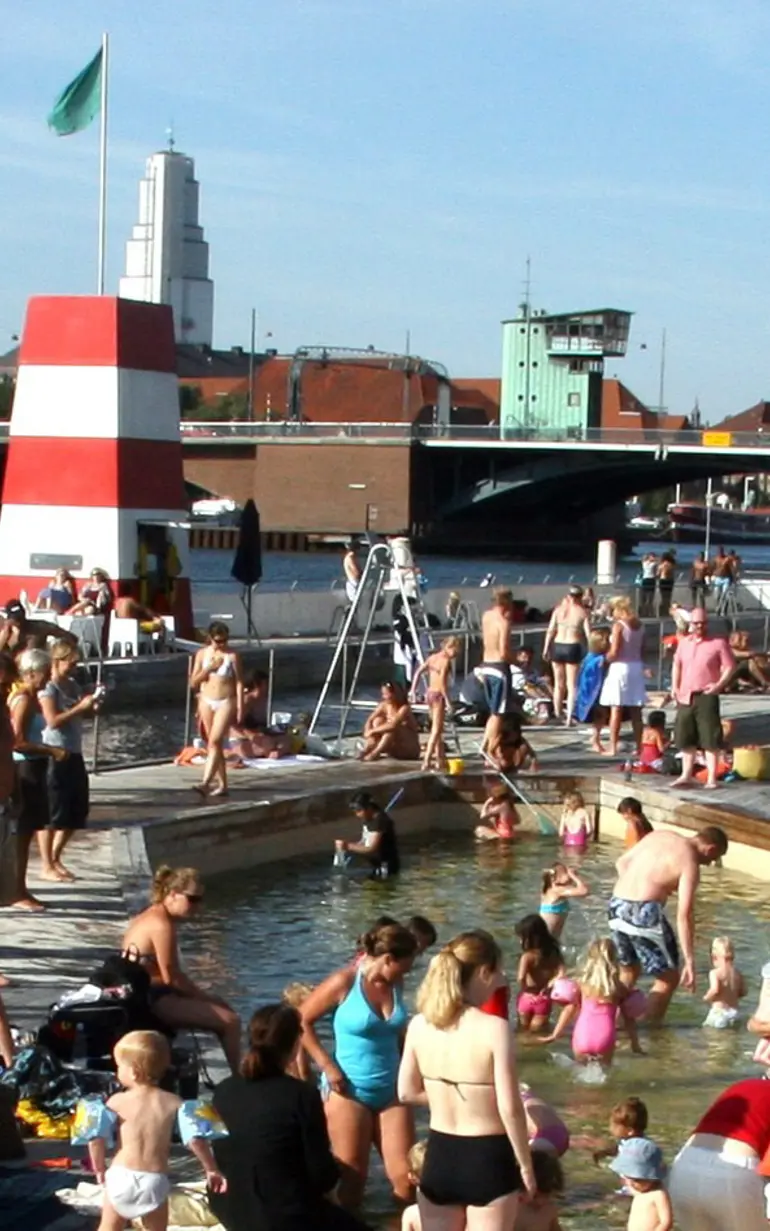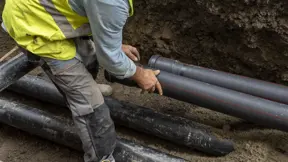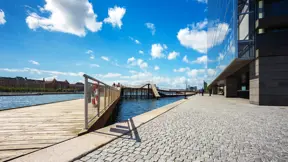
Safe bathing water in the heart of Copenhagen Harbour
A timely and efficient bathing water quality forecast system ensures safe waters
Copenhagen's vibrant harbour has been a beacon of the city’s spirit - transforming from a fishermen’s and merchant’s port to an industrial dock, before eventually evolving into the current recreative space. In recent decades, evolutionary measures taken by the City of Copenhagen have seen the former-industrial waters being turned into an oasis for recreational activities such as swimming and kayaking along with urban fishing and farming. But it hasn’t been always the case. See how a bathing water forecast system has helped kept water quality safe for visitors and tourists in Copenhagen Harbour.
Challenge
Copenhagen’s harbour faces the same threats to water quality as any other harbour: heavy rainfall, frequent release of sewage water and induced pathogenic bacteria.
To address these challenges, DHI – in collaboration with the City and HOFOR (the provider of the sewer data) – developed an innovative Bathing Water Forecast (BWF) system. In doing so, we transformed the city’s harbour and provided complete value for the investments made by the city for the sewer. Today, the downtown swimming area is a popular leisure destination where visitors can safely enjoy without the fear of contracting waterborne diseases.
Solution
A complex bathing water forecast system made simple for the user
DHI adapted and tailored the BWF system to suit the unique needs of Copenhagen’s harbour. Given the system’s complexity, it was important that DHI design it with its various end-users in mind. This meant making it simple to operate and delivering various targeted information which is easy to understand for both the general public and the authorities. DHI achieved this by taking an innovative approach to the design. We combined sensory systems, predictive tools and user-friendly dashboards that worked in combination to provide continuous monitoring of the harbour’s water quality and real-time information to users.
Forming a complete picture with constant data collection from multiple sources
The system constantly monitors the harbour’s water and predicts the concentration of the indicator bacteria Escherichia coli and Enterococci at specified locations along the water courses from the city to the harbour. To help forecast frequent pollution threats, DHI collects meteorological data from forecast suppliers and runs hydrodynamic models to retrieve data. All this information is then used to create models to demonstrate forecasts using DHI’s MIKE Powered by DHI software.
Choosing the most suitable methodology for an accurate forecast
The BWF system relies on online data and a MIKE 11 (now MIKE+ Rivers) model to estimate the inflow of water from the city into the harbour. This is followed by a MIKE 3 FM model calculating the transport of pollutants and a MIKE ECO Lab model for describing the fate of the bacteria to produce a complete predictive pollution forecast.
The model system can also be used as a highly effective tool to assess and identify the most cost-effective method to address solutions to improve water quality and reduce pollution risk.
Information and warnings made easily accessible across multiple media platforms
We created user-friendly dashboards on multiple media platforms to ensure that information is constantly and conveniently accessible to those who need it:
- Public websites are updated with the water quality forecasts and can be accessed by anyone who intends to use the harbour bath
- Alerts via sms broadcast an early warning when water quality drops – and provide another notification when the water is safe again
- Smartphone apps make updates conveniently accessible
- Managers’ web gives access to detailed time series for the authorities to help them make informed and timely decisions
- Managers’ log pages provide evaluation and quality reports on measurements and model performances
Results
With the BWF system, DHI has helped the general public overcome its scepticism about the water quality in the harbour. As a result, Copenhagen harbour has been transformed from an industrial port to a vibrant cultural and social centre of the city. For almost twenty years, Copenhagen’s residents have been taking advantage of the natural terraced landscape of the harbour bath with its piers, boat ramps, playgrounds and pontoons, and enjoying a water playground in the heart of the city.
This landmark project has set the standards for best practices in harbour water quality management worldwide, showcasing that effective integrated strategies can deliver safe water quality. People can now do what used to be unthinkable in Copenhagen—swim in the harbour.
- Early detection of pollution threats and timely, reliable forecast of water quality
- Efficient forecasting has reduced unnecessary closure of the harbour
- Clean, safe and appealing waters in the heart of the city
Client:
Location:
Denmark
Related SDGs:
SDG 6: Ensuring access to water and sanitation for all
SDG 11: Make cities and human settlements inclusive, safe, resilient and sustainable
SDG 13: Take urgent action to combat climate change and its impacts
Technology:
About our client
The government of the City of Copenhagen consists of its supreme body, the City Council, followed by seven standing committees. Find out more here.
You may also like
How can we help?
With our global network of offices, we make sure you get the right answers to your local needs. Tell us about your water challenges and we will get back to you.


